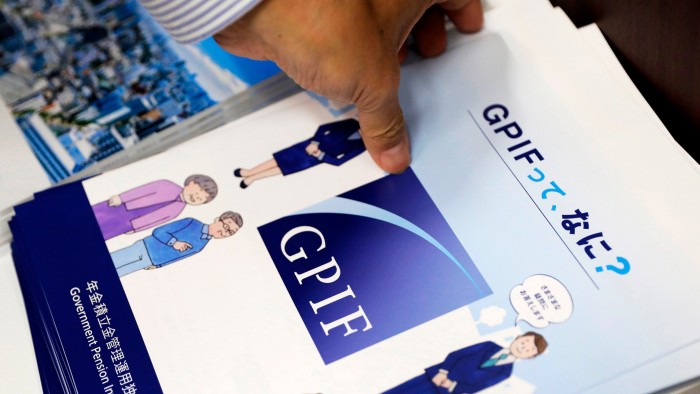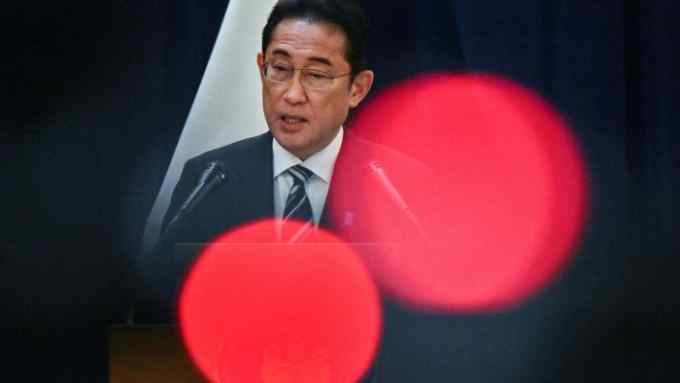Japan government pension acts on population strain

Simply sign up to the Pensions myFT Digest -- delivered directly to your inbox.
Japan’s Government Pension Investment Fund — one of the world’s most powerful investors — is overhauling the way it chooses active managers, in a bid to secure the higher returns needed to support a rapidly ageing population. As its sheer size makes it harder to achieve above average performance, the world’s largest pension fund is leaning increasingly on data science to find those managers who can beat the market.
“If asset owners can develop a scientific method for selecting active funds that stably generate excess returns, I think the proportion of active management in the capital market will increase,” says Eiji Ueda, GPIF’s chief investment officer. “GPIF is currently in the process of implementing such an approach.”
He notes: “We have selected 19 funds in North America and 14 funds in developed countries [excluding Japan], and are considering selecting a Japanese stock fund next”. In North America, GPIF ran investment simulations to winnow down a list of 1,400 funds.
That push has seen the number of active foreign equity funds awarded mandates by GPIF increase from seven at the end of 2021 to 25 at the end of last year — a figure Ueda says could increase again, if risks remain manageable.
The vast majority of its investments in bonds and equity are still being passively managed, with about 16 per cent in the hands of active managers.
Ueda, who has kept a low profile since taking over as CIO, remains confident he can push asset management companies into providing more data, which in turn he can use to make better decisions.
The fund, he says, is “planning the development of an IT infrastructure, so that we can take advantage of our ability to collect vast amounts of investment data in making investment decisions”.
A former Goldman Sachs bond trader, Ueda joined in 2020, taking over from Hiromichi Mizuno. With markets roiled by the Covid-19 pandemic, Ueda has implemented what people familiar with the matter say is an increasing focus on risk management.
GPIF, established as an independent agency in 2006 to invest the financial reserves of Japanese public pensions schemes, has more than ¥200tn ($1.3tn) at its disposal, and targets a real investment return of 1.7 per cent above nominal wage growth. But that performance matters more than ever as Japan’s demographics act as an experiment for the world: last month, for the first time, people over 80 made up more than 10 per cent of the population.
“The number of new babies is sinking and sinking and we don’t know where it will stop . . . there will be a strain on our pension system,” warns Akiko Nomura, managing director at the Nomura Institute of Capital Markets Research.
The fund’s portfolio tends towards an equal target weight for each of four broad asset classes: equities and bonds, both foreign and domestic. Over time, it has become more diversified, moving away from simply investing in Japanese fixed income. In 2020, it pushed up the weighting for foreign bonds to escape rock-bottom domestic yields, having previously hiked the weighting for domestic equities.
“If you look back in the history of the GPIF’s development, how they changed in the past 10 years, I think that movement . . . towards further diversification was quite striking,” says Nomura.
While the fund generated record returns of ¥19tn in the first quarter, due to its foreign investments and the weak yen, some analysts suggest the GPIF should be in an even better position.
Many people thought the changes to its portfolio allocations in favour of Japanese stocks in 2014 were pushed by the Shinzo Abe government “to boost domestic equity”, suggests Masatoshi Kikuchi, chief equity strategist at Mizuho Securities — noting that the weighting of Japanese equities in the MSCI global index is closer to 5 per cent.
The pension system’s long-term targets are up for review again next year. Analysts say it is too early to estimate what kind of portfolio changes might be in the offing and that the GPIF will almost certainly make adjustments before they are announced.
No matter what is decided, the GPIF’s moves will have wide-ranging consequences, be it in shifting its broad asset classes or moving further into more niche bits of the market. Alternatives, such as real estate and private equity, account for a tiny proportion of its portfolio, with the GPIF having only ventured into the asset class in 2014. Analysts say that is ripe for a change.
“The GPIF has never invested in domestic real estate . . . its investment in alternative investments, especially real asset investment, is quite low,” says Kikuchi.
“They are going step by step,” says Nomura — but even a small step for a ¥200tn fund could have serious ramifications for global markets.

Comments